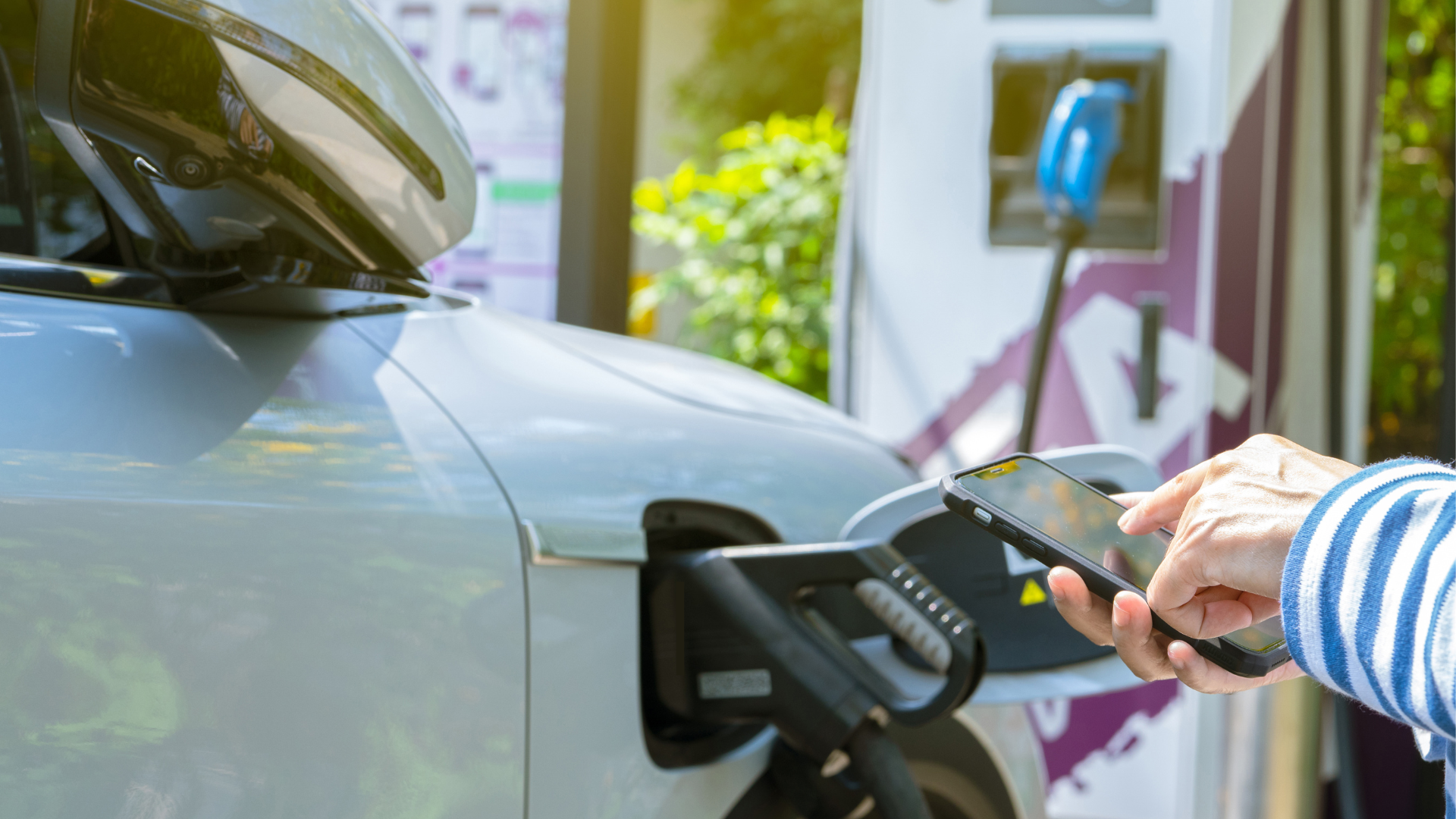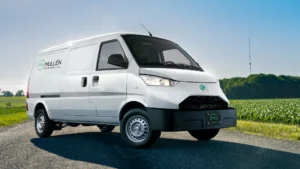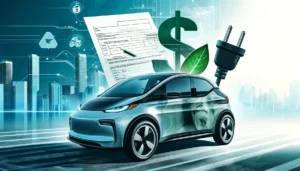A main question when transitioning to EV fleet vehicles is ‘how much does it cost to charge an electric vehicle?’ There are many factors to consider when answering this question.
One of the factors is how much it costs to install infrastructure and charging. And the other factor is the actual cost for charging the vehicle. This is dependent upon if you are charging at your own facility or at a public charger.
Today, we’re going to break down how to figure out the cost for charging an electric vehicle.
How to Calculate Cost to Charge an EV
Cost per kWh
EV’s store energy in kWh, which is a unit of measurement for electricity. Just like gas prices differ across the county, so do costs for kWh. You will need to look up your specific kWh through your utility.
Where to Find your Cost Per kWh
If you are using a public charger, the charger will have its own cost per kWh listed and this might be dependent upon time of day.
If you are using chargers at your own facility, the best way to find your cost per kWh is on your electric company’s website or your electricity bill. You’ll need to find your cost per kWh and what affects that cost.
There is also a resource for finding the cost per kWh for your location. It is called the Utility Rate Database. You can put in your information and it may provide the rate structure for your utility.
Here are some things that might affect the cost per kWh:
Time of Use
The price per kWh can also differ depending on the time of day or time of year. Most locations have summer and winter rates for electricity.
Think about when your vehicles will most likely be charging. Are they charging overnight, in the middle of the day? Most utilities charge more for early evening hours and less for night time hours.
Demand charges
Some utility companies have demand charges. Demand charges are fees that are based on the highest amount of electricity used at a point in time.
Demand charges are something to think about especially if you plan on plugging in all the vehicles at one time. Let’s say they come off the road at 5 p.m. and you want to charge them all for the next day. There will be a large spike in energy consumption as all the vehicles are plugged in.
There are ways to combat this too, there are programs to specifically help with load management. But it’s important to know if you have demand chargers and what they would be when calculating costs.
Additional Utility Charges
These are additional fees and taxes the utility charges and these will be harder to nail down. Some may be flat fees, some may be based on kWh usage, and some, like sales taxes, will be based on the cost of your bill.
If you have a current utility bill, it will help to see the additional utility charges and you can estimate how those will affect your future bills.
How Much Does It Cost to Charge an Electric Vehicle
Now that you know your specific cost per kWh, you can multiply that by your battery capacity to see how much it would cost to charge the battery. Keep in mind that an EV battery will hardly ever be depleted. It’s recommended to keep the batteries charged between 20% and 80%.
Ram Promaster EV

Let’s do a real world calculation. The Ram Promaster EV has a battery capacity of 110 kWh.
I live in Arizona and have APS as my electric company. We also have time of use charging from 4 pm – 7 pm on weeknights being more expensive. And have demand charges, where my highest hour of usage between 4 pm – 7 pm for the month gets billed at a much higher rate. We’re currently on summer rates.
So let’s see how much it would cost to charge my Ram Promaster EV at different times of day. I’m going to assume I’m charging the battery when it reaches 20% capacity. Which means it has 22 kWh still remaining and I will need to fill it up with 88 kWh.
During the Day before 4 pm
Arizona’s summer off-peak cost per kWh is approximately $0.06.
88 kWh x $0.06 = $5.28.
Plugging in at 5 pm
Arizona’s summer on-peak cost per kWh is approximately $0.14. But that’s only between the hours of 4 pm to 7 pm. We’re only going to be charging for 2 hours at this rate.
So to figure out how many kWh I might use I have to know what charger I’m using and how many kW it can deliver. The more kW a charger can deliver, the higher the demand charges will be. This is because more power is coming into the vehicle at one time. So if you are using a DC fast charger, demand charges will be higher than when using a Level 2 charger.
I’m going to say I’m using a level 2 charger that delivers 12 kW. Which means it can deliver 12 kWh. I’ll be charged the higher rate for 2 hours (5 pm – 7 pm) and then drop on to the lower rate for the rest of the time it takes to charge.
24 kWh x $0.14 = $3.36
64 kWh x $0.06 = $3.84
But I also have an on-demand charge of $19.50 per kW for my highest hour of usage for the month. Since the charger can put out a max of 12 kW, we’ll use that to figure out the demand charges.
12 kW x $19.50 = $234.
Wait, don’t freak out just yet! We’ll have to divide that number by the number of days we charged to get a truer picture of cost per charge. Since the demand charge is only charged once a month. I’ll divide it by the number of days in the billing cycle: 30.
$234/$30 is $7.80.
Now we’ll add our kWh to our demand charge.
$3.36 + $3.84 + $7.80 = $15
Plugging in After 7 pm
After 7 pm goes back to summer off-peak costs, so the cost would be the same as plugging in during the day. Which was $5.28.
Real World Results
In this example, we can see that how much does it cost to charge an electric vehicle can change wildly depending on the time of day. When plugging in before 4 pm or after 7 pm would be only $5.28 per charge for the Ram Promaster EV.
But if plugging in at 5 pm the cost jumps to $15. We can also see why plugging in multiple vehicles or using higher level chargers can get expensive when there are demand charges.
It is important to look into your utility company’s plans. Some companies have lower off-peak hours overnight specifically for EV charging.
Here is a resource from APS to help calculate the cost of charging your electric vehicle specifically for fleets.
Miles per Gallon Electric
When looking at ICE vehicles it is common to talk about how many miles per gallon the vehicle is getting. We can do some calculations and come up with the miles per gallon of gas equivalent.
I want to continue using the Ram Promaster EV to talk about the miles per gallon electric. The Promaster EV has a battery capacity of 110 kWh and a 164 mile range.
To find the mileage per kWh, divide the range by the battery capacity.
164/110=1.49
1.49 miles per kWh used.
33.7 kWh is equivalent to 1 gallon of gas. So the Ram Promaster EV would get 50.2 miles per gallon of gas equivalent (MPGe).
Use this MPGe to figure out what the price per gallon would be and also compare it to how far you can go currently on the equivalent of one gallon of gas.
If you have any questions, please reach out! We are a happy to help.
FAQs
What affects EV charging costs?
When charging at your own facility, utility rates cost per kWh will affect EV charging costs. When charging at public chargers, they will set their own price per kWh.
When is the cheapest time to charge an EV?
This depends on your utilities rates, but it will generally be overnight.




